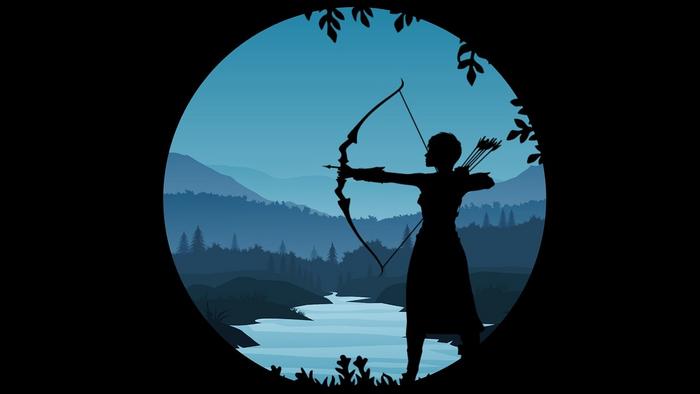Analysis exhibits that girls participated in subsistence looking within the majority of world cultures. (Credit score: Mohamed_hassan/Pixabay/CC0)
Join our e-mail publication for the most recent science information
In 2017, a paper within the American Journal of Bodily Anthropology reported on a shocking genetic evaluation. An individual buried on the historic Viking website of Birka, alongside weapons and different tools befitting a male Viking warrior, had no Y chromosome. She was a organic girl.
Archaeologists had examine such warriors in historic poetry, however feminine fighters “have typically been dismissed as mythological phenomena,” the paper says.
The Birka girl and different discoveries have challenged the concept that historic girls completely spent their time rearing youngsters and gathering vegetation and didn’t hunt and combat. Extra proof got here from a 2020 literature overview that concluded girls accounted for as much as 50 % of prehistoric large sport hunters within the Americas.
Learn Extra: Historic People Mapped Out Looking Machine on Boulders
Proof for Ladies Hunters
However what of modern-day foraging societies, such because the Tiwi Aboriginal individuals of Australia?
“Some researchers have prompt that girls’s function as hunters was confined to the previous,” says a brand new paper, “with more moderen foraging societies following the paradigm of males as hunters and girls as gatherers.”
To check this, the researchers from Seattle Pacific College drew on historic information from 63 totally different societies from all over the world and located that the outdated paradigm is inaccurate: girls hunted in 79 % of teams, including vastly to their teams’ caloric consumption. What’s extra, in these societies the place looking served because the central means for survival, 100% of ladies hunted.
Nets and Canines
The evaluation additionally discovered that girls employed “a larger flexibility of looking methods in comparison with males.”
They hunted with a wider vary of companions, together with different girls, youngsters and canines, whereas males tended to hunt alone or with a single accomplice, similar to a canine or spouse. Ladies who hunted have been additionally extra concerned in passing on looking practices to others, the examine discovered.
They usually used extra artistic weapons, together with nets to entrap sport and quite a lot of different implements. Within the Aka society within the Central African Republic, girls have been extra more likely to hunt with nets, and so they additionally used spears, machetes and crossbows.
Within the Amazon state, Matsés girls hunted large sport animals utilizing giant sticks and machetes.
How Many Ladies Hunted Huge Sport?
Of all the ladies who hunted, 46 % of them hunted small sport, whereas 48 % hunted medium- or large-sized sport (and 4 % hunted sport of all sizes).
Regardless of the measurement of the animal, the overwhelming majority of feminine looking is intentional, the examine discovered. Ladies got down to go looking and did not simply occur throughout a possibility to kill one thing.
Outdated Biases
The authors hope to vary the present stereotypes of “Man the Hunter” and “Girl the Gatherer,” or at the very least broaden these concepts to make room for girl hunters. Such stereotypes immediately have an effect on the sphere of archaeology, the place scientists are generally reluctant to determine looking instruments after they’re buried with a girl, a press launch stated.
The stereotypes, “name for reevaluation of such proof and warning in opposition to misapplying the thought of males as hunters and girls as gatherers in future analysis,” the assertion stated.
Learn Extra: How Hunter-Gatherers Used The Land Round Stonehenge
